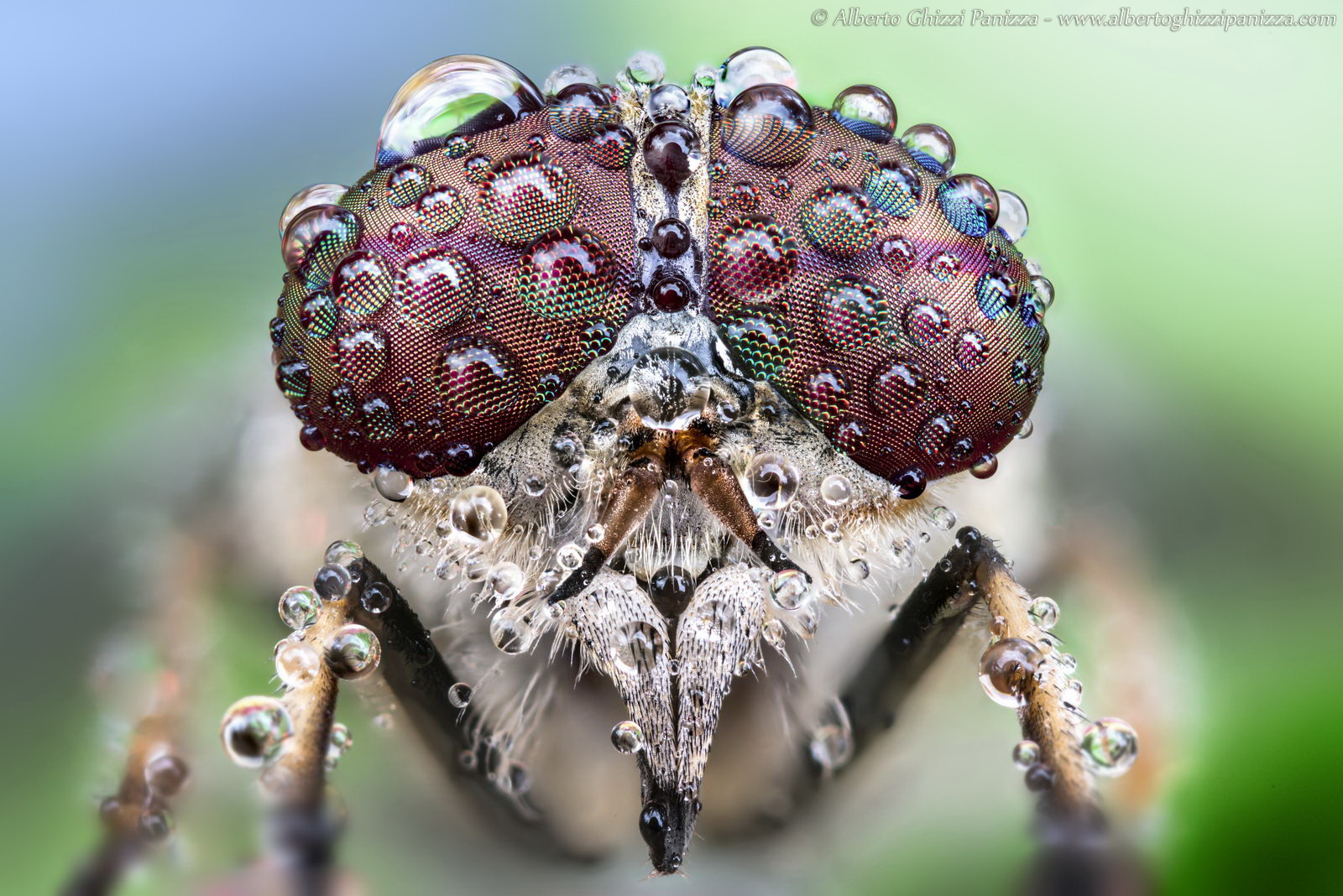Integralfeldeinheiten
Wie man eine 3D-Ansicht einer ganzen Galaxie mit einer einzigen Aufnahme gewinnt
Nehmen wir eine Fliege. Haben Sie schon einmal versucht, eine zu fangen? Da muss man schon schnell sein, denn sie kann wie die meisten Insekten Bewegungen in einem Umfeld von 360° wahrnehmen. Das Geheimnis liegt in ihren Facettenaugen, die aus einer großen Anzahl winziger Lichtrezeptoren (auch Ommatidia genannt) bestehen. Diese arbeiten zusammen und liefern eine sehr weitwinklige Mosaikansicht. Ameisen haben irgendwo zwischen einige wenige bis zu etwa Tausend Ommatidia, Fliegen und Bienen einige Tausend, und Schmetterlinge und Libellen kommen auf einige Zehntausend. Je größer die Anzahl der Ommatidia, umso breiter ist das Gesichtsfeld des Insekts und umso schärfer die Abbildung.
Nach einem ähnlichen Prinzip, jedoch mit einer ganz anderen Zielsetzung, haben Wissenschaftler ein Instrument namens Integralfeldeinheit (engl: integral field unit, kurz IFU) entwickelt. In einer IFU wird das Bildfeld in viele Zellen oder Segmente zerlegt, um ein komplettes Abbild des Ganzen zu bekommen. IFUs sind in der Erdfernerkundung weit verbreitet, speziell zur Wettervorhersage, und werden bei der Überwachung von Naturkatastrophen und des Klimawandels eingesetzt.

IFUs werden in der Astronomie eingesetzt, um großflächige Objekte wie Nebel, Galaxien oder einen Haufen von Sternen oder Galaxien mit einer einzigen Aufnahme zu untersuchen, wobei eine Technik namens Integralfeldspektroskopie eingesetzt wird. Bei dieser Methode wird das Signal jeder Zelle oder jedes Pixels des Gesichtsfelds in einen Spektrografen geleitet, der dann für jedes einzelne Pixels ein Spektrum erzeugt. Alle diese Spektren werden dann in einem Datenwürfel (siehe Abblidung 1) angeordnet, der das ganze zweidimensionale Gesichtsfeld plus einer dritten Dimension enthält, die aus den vom Spektrografen gelieferten Wellenlängenanteilen (Farben) besteht (siehe Abbildung 2). Astronomen können diese Fülle an Informationen aus der Integralfeldspektroskopie nutzen, um zum Beispiel die Bewegung des Gases in einer fernen Galaxie (siehe eso1437) oder die Distanzen der einzelnen Galaxien in einem Gesichtsfeld zu messen (siehe eso1507).
Es gibt verschiedene Typen von IFUs mit unterschiedlichen Techniken, um das Bildfeld zu zerlegen. Die drei Hauptarten sind:
Eine Anordnung von Mikrolinsen (ähnlich dem Facettenauge eines Insekts)
Ein Lichtfaserbündel, das allein oder in Kombination mit einem Mikrolinsenarray eingesetzt werden kann (siehe Abbildung 3)
Ein Bildteiler (siehe Abbildung 4)
Die erste Idee für eine IFU hatte G. Courtes im Jahr 1982. Ihr erster praktischer Einsatz in der Astronomie erfolgte mit dem TIGER-Instrument, das sein erstes Licht im Jahr 1987 am 3,6-Meter-Canada-France-Hawaii Telescope (CFHT) auf dem Mauna Kea auf Hawaii sah. Die IFU im TIGER-Instrument ist eine Mikrolinsenanordnung.
Der erste Integralfeldspektrograf der ESO war SINFONI, das sein erstes Licht am Very Large Telescope (VLT) im Jahre 2004 sah. SINFONI arbeitet mit einem Bildteiler nach demselben Prinzip wie das neuere MUSE-Instrument, das eine riesige IFU besitzt. Der Multiobjektspektrograf FLAMES hat auch zwei Integralfeldeinheiten, während KMOS als Infrarotspektrograf der zweiten Generation 24 kleine IFUs besitzt, von denen jede auf einem schwenkbaren Arm sitzt. VIMOS hat auch eine ziemlich große IFU, die Mikrolinsen und ein Lichtfaserbündel kombiniert. Alle diese Instrumente haben unterschiedliche Eigenschaften – sie sind für unterschiedliche Wellenlängen empfindlich, sie haben unterschiedlich große Bildfelder und unterschiedliche spektrale Auflösung – was sie jeweils für die Beobachtung bestimmter Objekte und für unterschiedliche astronomische Aufgaben spezialisiert.
Integralfeldspektrografen werden immer aufwändiger und tragen immer größere Detektoren für schärfere und tiefere 3D-Analysen unseres Kosmos. Um beim Beispiel der Insekten zu bleiben: IFUs entwickeln sich von Ameisen zu Libellen.
Wissenschaftliche Highlights
- Siehe wissenschaftliche Highlights von FLAMES
- Siehe wissenschaftliche Highlights von VIMOS
- Siehe wissenschaftliche Highlights von SINFONI
- Siehe wissenschaftliche Highlights von MUSE
- Siehe wissenschaftliche Highlights von KMOS



